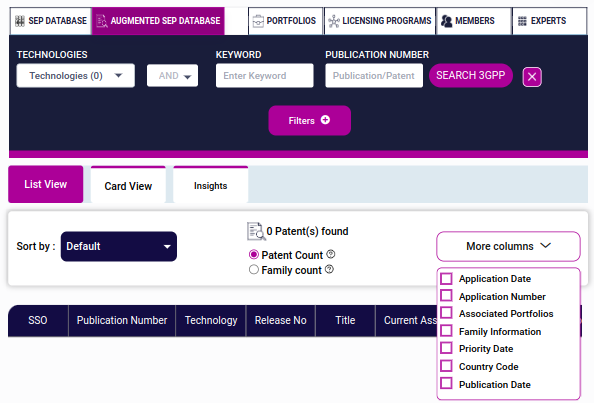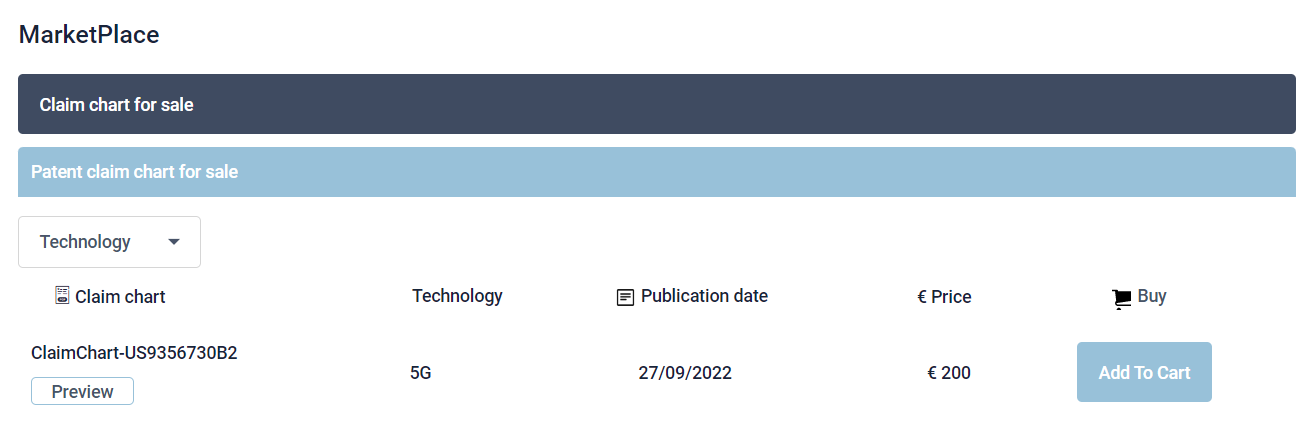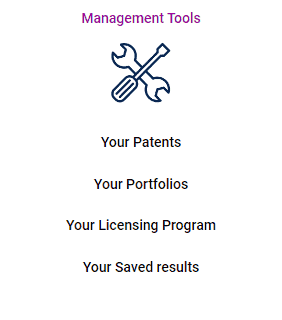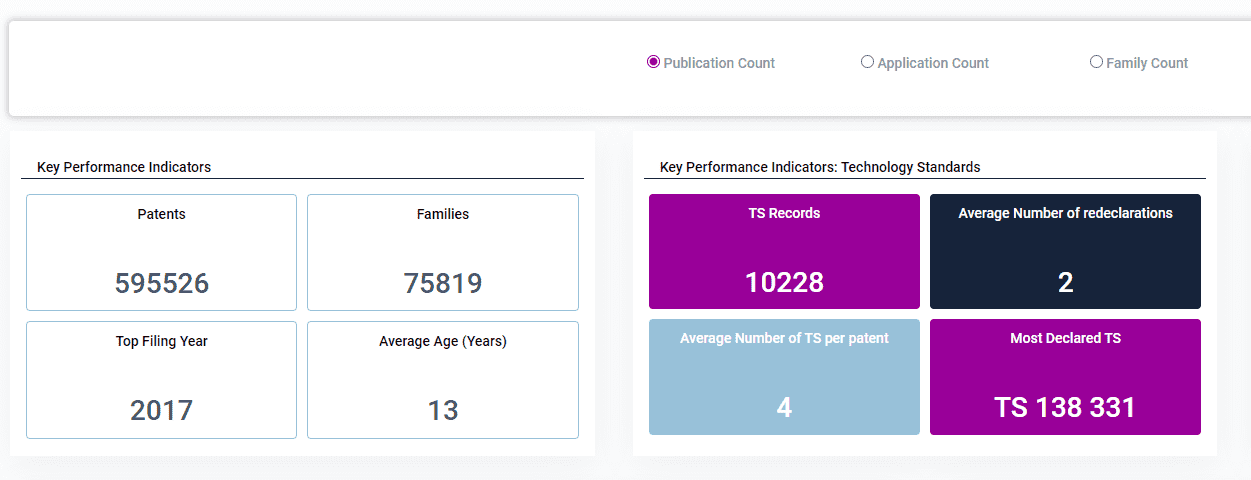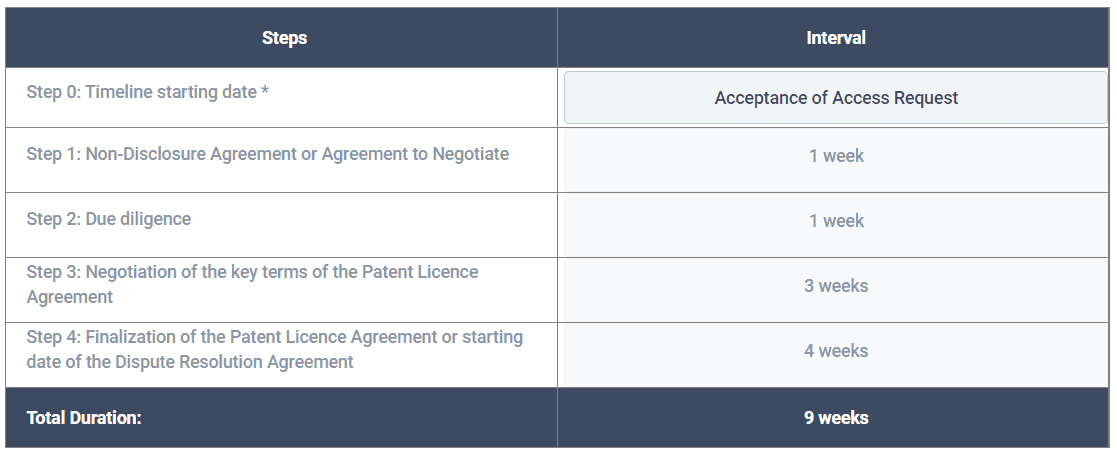Blog
Unlocking the benefits of transparency in the SEP ecosystem
<div> <div class="pb-2 pt-2 row"> <div class="col-12"> <div class="blogmargin container text-center w-100"> <h1>Unlocking the benefits of transparency in the SEP ecosystem</h1> </div> </div> </div> <p><img class="d-block img-blog img-fluid mx-auto" src="/assets/frontend/images/blog-12.jpeg" alt="blog-list-12"></p> <div class="blog-content container pb-4 pt-4 text-justify"> <p>In the fast-paced world of technology standards and innovations, Standard Essential Patents (SEPs) are pivotal in ensuring interoperability and driving technological advances. Indeed, these patents must be implemented by any entity looking to manufacture products or provide services that adhere to industry standards such as 5G and Wifi. The management and licensing of SEPs are thus critical issues for the global market. </p> <p>But what role does transparency have in the SEP environment? Transparency significantly streamlines and enhances the efficiency of licensing processes. It also plays a critical role in fostering enhanced collaboration and innovation. In turn, the ease of navigating the SEP landscape with greater transparency directly benefits market expansion and competitive advantage. Finally, firms that manage their SEPs responsibly are seen as good corporate citizens, which enhances their reputation and strengthens their position in the global marketplace.</p> <p>In this newsletter, we do not argue that the SEP ecosystem is opaque but rather look at the overall benefits of more transparency in the SEP ecosystem.</p> <h2>1. The Crucial Role of Transparency in the Standard Essential Patent environment and its key benefits:</h2> <p>SEPs underpin key technologies in standards like 5G, IoT, and AI, facilitating compatibility and interoperability across a wide array of devices and systems. A transparent SEP ecosystem ensures that these foundational technologies are accessible under fair, reasonable, and non-discriminatory (FRAND) terms.</p> <p>Transparency means appeased relationships between patent holders and implementers. Indeed, stakeholders are calling for greater accountability and clearer guidelines to prevent patent hold-ups and hold-outs, in other words, to ensure that no entity is unfairly blocked from market entry and monetization of their patents.</p> <p>But in the context of Standard Essential Patents, transparency is of course tangible. It encompasses the availability of comprehensive, up-to-date information about which patents are essential, who owns them, and how they can be licensed. Although it is not possible to list all data that should be available to both implementers and licensors, the following documents are usually considered as guaranteeing transparency in the context of SEP negotiations:</p> <p><b>1. Patent Lists:</b> Full and up-to-date lists of SEPs should be accessible.</p> <p><b>2. Patent Licensing Agreements:</b> Licensing agreements may provide benchmarks for FRAND terms, helping parties understand and establish what is considered fair and reasonable in the industry.</p> <p><b>3. Court Decisions and Arbitration Outcomes:</b> Information on previous judicial and arbitration decisions involving the SEPs in question can guide current negotiations.</p> <p><b>4. Royalty Calculation Methodologies:</b> Clear documentation on how royalties are calculated, including any formulas or base rates used, can help both parties understand the financial implications of the licensing agreement and ensure that royalty demands are in line with industry standards.</p> <p><b>5. Technical Documentation of Standard Implementation:</b> Detailed documents that describe how the patents are implemented within the standard can aid in understanding the practical and technical relevance of the patents. This may help in assessing whether a patent is truly essential to the standard.</p> <p><b>6. Third-party Patent Analyses:</b> Independent analyses or evaluations regarding the essentiality and validity of patents claimed as SEPs can help resolve disputes over patent validity and essentiality.</p> <p>The availability of these documents ensures that all parties are well-informed and can engage in negotiations with a clear understanding of the technical and legal aspects of SEPs. But let’s take a closer look at the key benefits of more transparency in the SEP environment:</p> <p><b>Streamlined Licensing Negotiations:</b> Clear guidelines and openly accessible patent information can significantly reduce the administrative burden, time and resources spent on negotiations and due diligence. This improves efficiency in negotiations and facilitates quicker agreements. When companies have access to detailed, reliable information about licensing fees and terms, they can also better forecast costs and incorporate them into their financial planning, thus improving predictability.</p> <p><b>Improved legal certainty and informed legal strategy:</b> Clear and accessible information reduces the potential for misunderstandings and disputes over patent infringement. Transparency also ensures that SEP holders disclose licensing terms that adhere to FRAND commitments, making it less likely for licensees to challenge these terms as unfair or excessive. Finally, transparency allows companies to develop more informed legal strategies, allocating resources to potential areas of dispute before they escalate into full-blown litigation.</p> <p><b>Enhanced Collaboration and Innovation:</b> Enhanced collaboration and innovation are strong benefits of transparency. Indeed, when companies have better visibility into the patents essential to industry standards, they can easily identify partners and collaborative opportunities. This speeds up the development of new technologies and broadens the scope of innovation.</p> <p><b>Market Expansion and Competitive Advantage:</b> market expansion and competitive advantage are directly influenced by increased transparency. Companies that can navigate the SEP landscape with greater ease and confidence are better positioned to enter new markets and scale their operations. Increased transparency levels the playing field, especially for smaller companies or new entrants who might otherwise face opaque markets and hidden costs. This inclusivity can lead to more competition and innovation. Moreover, companies that are transparent about their SEPs are often viewed as more trustworthy, enhancing their reputation and competitive standing in the global market.</p> <p>In light of these dynamics, enhancing transparency in the SEP environment is not just beneficial but imperative.</p> <h2>2-The “Evolving - Non-Evolving” Landscape of SEP Transparency at the EU Level</h2> <p>While the debate about transparency in the SEP environment is not new, it was more specifically reawakened in 2023 when the European Commission proposed a regulation on SEPs, known as COM(2023)232. This proposal aimed at establishing a more structured and transparent framework for the licensing of SEPs, and was part of the broader EU IP Action Plan initiated in November 2020 to support the EU’s recovery and resilience, addressing the challenges and needs of the digital transformation in various sectors like connected cars and Internet of Things (IoT) products.</p> <p>The key tenants of the proposal included:</p> <p><b>The Creation of a Competence Centre:</b> Located at the European Union Intellectual Property Office (EUIPO), the Centre was envisioned to administer several crucial elements of the new framework, including an SEP registry, essentiality checks, and FRAND determination procedures.</p> <p><b>The SEP Registry and Essentiality Checks:</b> The proposal required SEP holders to register their patents, which would then have undergone annual checks to confirm their essentiality to the standards they claimed to support.</p> <p><b>The FRAND Determination Process:</b> The proposed regulation sought to streamline the FRAND licensing process by establishing a mandatory determination period of up to nine months before any court actions could be initiated, offering a safe harbor for negotiations.</p> <p><b>The Aggregate Royalty Rate Notifications:</b> SEP holders and implementers would have been able to notify or request a conciliator to recommend a non-binding aggregate royalty rate, to bring more predictability and transparency to licensing costs.</p> <p>Support Measures for SMEs: This included free advisory services, reduced fees for SEP registration and essentiality checks, and access to the SEP register, promoting more favorable FRAND terms for small and medium-sized enterprises.</p> <p>The regulation faced mixed reactions. While it was supported for its goal to enhance transparency, significant opposition came from major stakeholders concerned about the implications of the increased burden on their business operations, and its consequences on innovation and competitiveness.</p> <p>Implementers generally welcomed the proposal. They viewed it as a potential breakthrough to address the ambiguities and high transaction costs traditionally associated with SEP licensing. Implementers have long advocated for clearer and more predictable licensing frameworks that could help reduce litigation and ensure easier access to necessary technologies. The proposal's focus on establishing a centralized system for essentiality checks and a registry of SEPs was seen as a positive step towards reducing the 'patent thickets' and minimizing the risk of opportunistic behaviors by SEP holders. However, some implementers expressed concerns about the practical implementation of these regulations and the potential for bureaucratic overreach that could complicate rather than simplify the licensing processes.</p> <p>SEP holders or licensors, including major tech companies and patent pools, had more varied responses. While some recognized the benefits of greater clarity and efficiency in the licensing process, others were concerned about the potential constraints on their negotiation leverage and flexibility in setting terms. The proposal’s stipulation for a more rigid framework for determining FRAND terms was particularly contentious. Licensors were wary that such standardization could lead to the undervaluation of their intellectual property, especially in a dynamic technological landscape where the value of innovation cannot be easily standardized across different sectors and products.</p> <p>Industry experts and legal analysts noted that the proposal could lead to significant changes in the SEP landscape in Europe, and pointed out the challenges in balancing the interests of various stakeholders and the potential for unintended consequences if the regulations are not carefully crafted.</p> <p>The proposal highlighted the ongoing tensions between the need for open access to technologies underpinning standards and the rights of patent holders to receive fair compensation for their innovations. On 11th February 2025, however, the European Commission announced the withdrawal of its controversial proposal. This decision was reached due to the lack of foreseeable agreement among stakeholders. The status quo of SEP licensing and enforcement in the EU is thus maintained, without the changes that had been suggested for creating centralized oversight and standardization of FRAND terms through the European Union Intellectual Property Office. The European Commission has nonetheless indicated that it will re-assess the situation to determine whether a new proposal should be tabled or if a different approach should be adopted in the future.</p> <h2>3- Embracing Transparency with FrandAvenue</h2> <p>As the tech industry continues to evolve at a rapid pace, the importance of clear and accessible SEP information becomes ever more crucial in fostering an environment of innovation and fair competition.</p> <p>FrandAvenue offers a pioneering solution to these challenges. By offering a structured and open environment for both SEP licensors and implementers, FrandAvenue facilitates fair and efficient negotiations and licensing of SEPs under Fair, Reasonable, and Non-Discriminatory (FRAND) terms. Here's an exploration of how FrandAvenue contributes to creating a more transparent SEP ecosystem:</p> <p><b>Centralized Information Platform:</b> FrandAvenue operates as a centralized platform where all essential details about SEPs can be accessed by stakeholders. This includes comprehensive patent lists, and detailed information related to each SEP. By aggregating this data in a single, accessible location, FrandAvenue eliminates the common opacity surrounding SEP ownership and status, which often leads to disputes and inefficiencies in the licensing process. This transparency is crucial in helping parties perform due diligence and in fostering an environment where informed decisions can be made more swiftly.</p> <p><b>Streamlining the FRAND Licensing Process:</b> FrandAvenue provides a systematic approach to the FRAND licensing process. It offers tools and resources that help define and understand what constitutes 'fair' and 'reasonable' terms, which are often points of contention in SEP negotiations. By standardizing aspects of the negotiation process FrandAvenue reduces ambiguities that can lead to prolonged disputes. This structured approach not only speeds up the negotiation process but also ensures that it is conducted under transparent and equitable conditions for all parties involved.</p> <p><b>Essentiality Checks and Validation:</b> One of the key features of FrandAvenue is its mechanisms for independent essentiality checks. This tool and service help mitigate one of the major issues in the SEP landscape—over-declaration of patent essentiality. Through transparent essentiality verification, FrandAvenue ensures that licensing negotiations are based on accurate and truthful patent information, thus enhancing trust and reducing litigation risks among stakeholders.</p> <p><b>Supporting SMEs and Innovation:</b> FrandAvenue places a strong emphasis on supporting small and medium-sized enterprises (SMEs) which are often disadvantaged in the SEP licensing market due to lack of resources or expertise in navigating complex patent landscapes. The platform offers tailored advisory services, reduced fee structures, and a signposted negotiation platform that does not require expertise in SEPs. By democratizing access to essential patents and reducing entry barriers, FrandAvenue aligns with the overall goal of a fair and competitive technology sector.</p> <p><b>Advocacy and Education:</b> Beyond just facilitating transactions, FrandAvenue is committed to advocacy and education around SEPs and FRAND issues. The platform conducts webinars and provides educational resources that help all market participants understand the evolving dynamics of SEP licensing. This educational aspect maintains an informed community of stakeholders.</p> <p>By addressing traditional pain points, and by offering structured support to new market players, FrandAvenue enhances the operational transparency of SEPs and ensures that companies from all industry sectors get a FRAND licensing agreement. For more information on how FrandAvenue can assist your company in navigating the complex landscape of SEPs, visit our website at FrandAvenue.</p> <h2>About FrandAvenue: Your Partner in SEP Solutions</h2> <p><b><a href="https://www.frandavenue.com/en/">FrandAvenue</a> :</b> Built for Everyone in the SEP Ecosystem</p> <p>In the evolving world of Standard Essential Patents (SEPs), every stakeholder—whether a patent holder or an implementer—deserves access to tools and resources tailored to their unique needs. That’s why <a href="https://www.frandavenue.com/en/">FrandAvenue</a> was designed to be inclusive and versatile, catering to:</p> <p><b>Patent Holders:</b> We are here to support your teams in strengthening your FRAND position and executing your SEP strategy.</p> <p><b>Implementers of all sizes:</b> From start-ups to large corporations, we help you navigate the SEP environment with confidence.</p> <p><b>All industry sectors:</b> Whether you are in telecommunications, automotive, IoT, or any other sector, our tools streamline SEP negotiations and compliance.</p> <p><b>All Levels of SEP Expertise:</b> Whether you are a seasoned IP professional or new to the complexities of SEPs, our intuitive platform and expert guidance make navigating the SEP landscape easier than ever.</p> <h3>What FrandAvenue Offers:</h3> <p> Access to comprehensive SEP databases, including an augmented SEP database</p> <p> A claim charts marketplace designed to streamline licensing negotiations groundwork</p> <p> Analytics tools for actionable insights</p> <p> Negotiation support tailored to your industry and goals</p> <p><b>Empowering Every Stakeholder:</b> At FrandAvenue, we believe that size, sector, or expertise should never be a barrier to success in the SEP ecosystem. Our platform is here to level the playing field and drive innovation for all.</p> <p>Ready to see how FrandAvenue can support you? Let’s connect! #SEP #FRAND #Innovation #IntellectualProperty #FrandAvenue</p> </div> </div>
Read More >>


.png)

